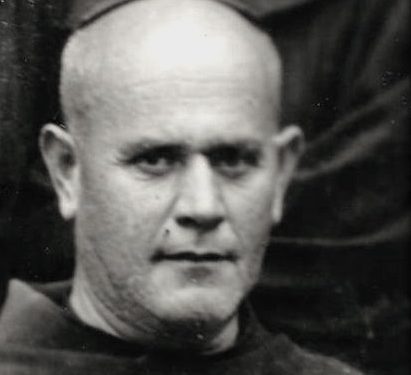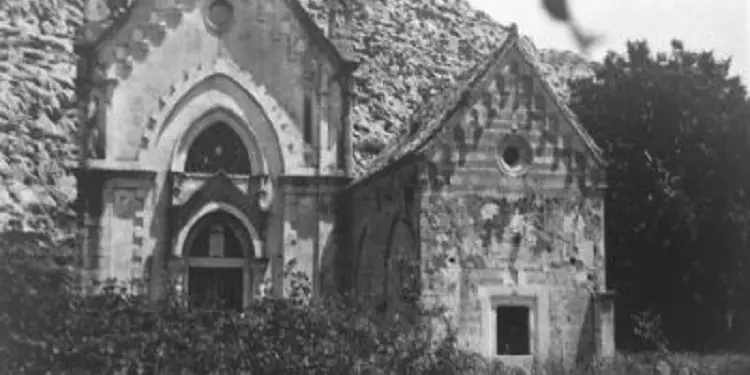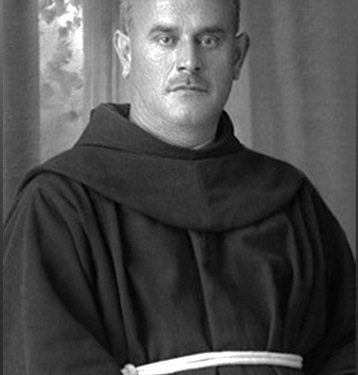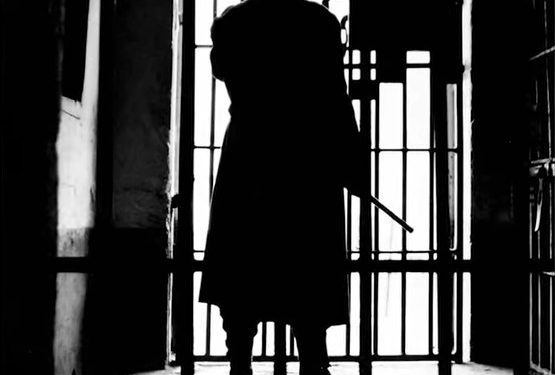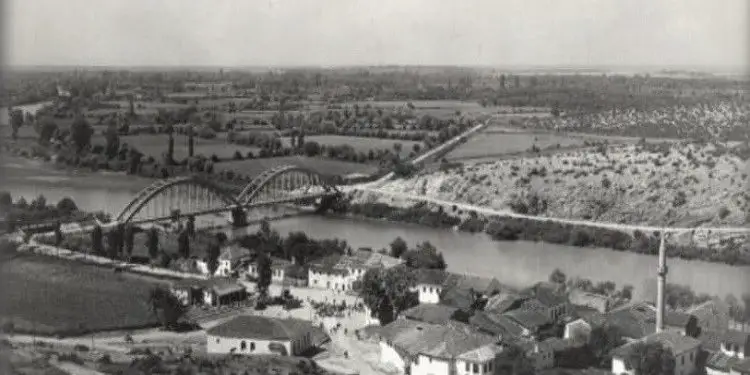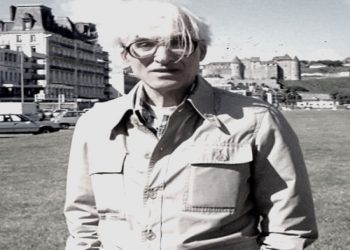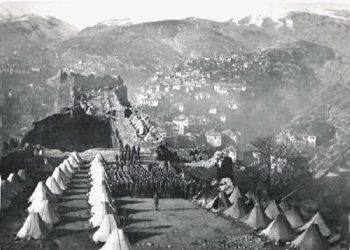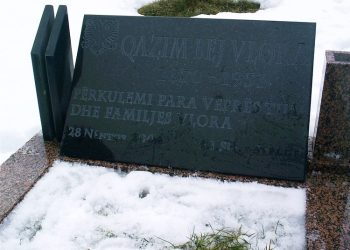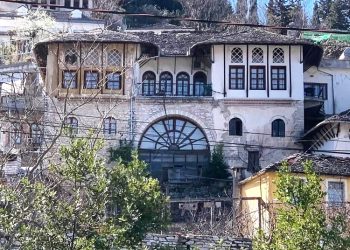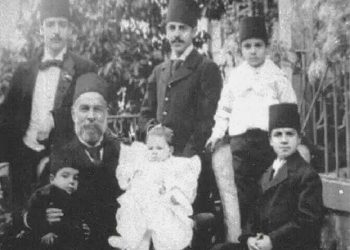By Gjeto Turmalaj
Memorie.al / It must be said at the outset that it is somewhat difficult to adequately describe this portrait, and even more so to reflect deeply and clearly the life and work of this martyr. This holy missionary deserves to stand out with those sacrifices and pains, which he experienced, with his extraordinary contribution, to the sublimation of life, as a wise spiritual shepherd, who should take his place on the deserved altar.
Life and Calvary of Pain
Gjon Serafin Koda, son of Gaspri and mother Ananijeta, was born on April 25, 1893, in Janjevë, Kosovo, into a family with religious, patriotic and patriotic traditions, a blessed family of the Karadak Mountains, an area known for heroism and love of homeland. Gjon was educated since childhood, with faith in God and devotion to the homeland. Thus, thanks to the great desire of his parents, he became a priest.
And precisely in 1908, he fulfilled the calling he had received from God and carried out the bequest of his parents and the desire of his heart. He completed his higher studies in Austria. According to the tradition of the Brothers, he took the name Serafin. He celebrated his first Mass on July 30, 1925. Later, the friar from Janjeva would continue on the path of the shepherd of the flock of Jesus Christ.
He also served in the regions of the motherland, Albania, such as in Dushman, Shala, Prekal, Bushkash, Vukël, Kelmend and finally, he was assigned to the Diocese of Sapa of Lezha. When Father Serafin arrived in the old city of Lezha, with the Franciscan friar’s hat and a rope tied around his body, he meditated with the eyes of a man who was stepping into those unknown lands for the first time.
At the first meeting in the Parish, they had told him that on that small hill, west of the city of Lezha, opposite the 2500-year-old fortress, where the ancient city of Lissus once lay, through which the Drin River passes, Saint Francis stopped on that bank 700 years ago, during his pastoral journey, and left a bequest that a church be built there.
And so it was. Saint Francis planted a pine tree, as a good sign for the foundations of the church. The construction of that Temple was later reflected in the “Cave of Light”. Moreover, the city where Father Serafini served was also the land of the “Covenant of Lezha”, of the Albanian principalities, headed by Skanderbeg. Also, there are the foundations of the Church of Shënkoll, where our National Hero, Gjergj Kastrioti, Skanderbeg, is buried.
Like all clergymen, Father Serafini lived his days of religious service in the Diocese of Lezha, with dedication and tirelessness, where even today the spirit of the work and ideal to which he was dedicated is felt, at a time when poverty was being experienced, sitting cross-legged in the Albanian lands.
With the end of World War II and the definitive establishment of the communist regime in Albania, Father Serafini and his Franciscan brothers would go through an ordeal of pain, from the most unscrupulous crimes of the regime, through the infamous Albanian State Security, which killed the cream of the clergy intelligentsia, and innocent people, who were slaughtered by the Stalinist-Enverist regime.
Arrest and imprisonment
Serafin Koda was a parish priest in Lezha, when he was arrested. This happened after State Security people previously held a meeting to discuss economic problems with the Assembly’s Fretni, but in fact, there State Security officers were activated as never before, to give it political meaning.
Thus bound, they isolated him in one of the chambers of the Parliament, torturing him with the most inhumane methods, psychologically and physically, with fabricated alibis, as one of the opponents of the communist regime and for the overthrow of their power. They asked for his cooperation, to testify against other clerics, so that the State Security could arrest the clerical intelligentsia.
It was May 1947, he had just turned 54 and precisely, as we quoted above, on April 25. That day was celebrated by him and his other clerical brothers and he expressed himself quite enthusiastically, that he was happy to have been born on that date, which for him was symbolic, because it coincided with the Day of the Evangelist, Saint Mark.
This date also aroused nostalgia for his birthplace, because in Janjevë, the first Albanian school was opened in 1671, a historical letter dated April 10, 1683, and Pjetër Bogdani’s own note, in the book “Çeta e Profetenve”, which was sent at that time from Janjevë.
Investigation and torture
It didn’t take long for the brave priest to be questioned by State Security investigators and subjected to the most inhuman and unimaginable tortures.
– “Come on, tell us, priest Serafin, what hostile conspiracy have you prepared against our immortal communist power”?
– “No way, no and no, neither have I, nor have any of my friends. We have not even thought, absolutely, what you are telling me, comrade investigator, No, No. In no way”!
– “Do you hear what this man is saying to me?! But I am not your friend, you enemy of the people, a cub of the Vatican”.
– “Please, no I am not an enemy, I am just a priest, I do not know hatred, we are for peace and love. Faith in God itself does not allow us to hate and offend people”.
– “Well, here we go, we are beating your cheeks with our fists, here is another one”. Blood was flowing from Father Serafini’s face, from his mouth and nose.
– “Come back to your senses, you vile Serafini. Hey, if we listen to you, tell us, which one of you is the leader of the group, in that nursery of yours”?
– “I personally do not know anything, none of my friends and comrades; I have not heard them speak out against the people’s power”.
– “Show us those leaders there in your ‘Sapa’, answer me”? And the frenzy of punches, kicks and beatings poured out on the priest.
– “We have neither hierarchy nor superior, we are all brothers”.
– “Now tell us, where have you hidden the weapons, otherwise, I will be drowned this minute”?
– “By honor, by justice, I swear to you, we have no weapons”.
– “Listen well; you have three minutes to tell everything and if not, hang yourself”!
– “As for the faith that the man has, I have nothing to say”!
The three investigators who had interrogated him, descended on Father Serafin, torturing and beating him barbarically, until he lost consciousness. As he lay there on the floor, bloody, bruised and unconscious, one of the investigators put his hands in his throat, to strangle the innocent priest.
Blood began to flow from his throat. But the communist beast was not satisfied with that. The tortures continued for several more hours. When they left, Father Serafini was dying on the cold cement of the room.
From midnight on May 11, 1947, Father Serafini, weighed down by his wounds, was only mentioned for a few minutes. His clerical brothers took him to the nurse. As he passed in front of the body of the Lady, he prayed in a broken voice, through the blood that flowed from his mouth: “O Virgin Mary, act quickly with my soul.” As soon as they laid him on the bed, he prayed for the last time, unable to join his hands:
“O Jesus, take my spirit into your hands, that I may dedicate myself to you with all my heart.”
“Our Father who art in Heaven,” and… he gave up his spirit…! He handed over his white soul to the Almighty Father, to join the choir of angels in heaven, so be it.
After the death of Father Seraphim
The faithful of the Parish, his contemporaries, loved the brave priest very much, who with his manly attitude, became a martyr. They lost, not only a man devoted to religion, but also a beloved man, who had never been absent, with the help of the word of God, in family joys and sorrows.
He had served them on all occasions, visiting the sick, confessions, blessings of houses, baptisms, praying for the dead. People spoke with the best words of their souls, saying that Father Serafini was a zealous, dedicated, big-hearted and loving missionary.
The nurse of those years, Marie Ndoja, who treated Father Serafini, in moments of complete agony, did her best to save him, but the great wound of damaged veins and the flow of blood from his throat shortened his life. Maria buried the brave priest with great difficulty and in complete secrecy, under an olive tree, which was in the courtyard of the Assembly of Brothers, on the hill that the people called; “Dom Lleshi’s Church”.
Even today, it is not known why it was called by that name. Perhaps a parish priest in that Church left a mark with his name. Perhaps, by the Ottoman invaders, Dom Lleshi had also been made a martyr, and in his memory, the church on the hill was named. But the years have passed and nothing is known for sure.
The greatest madness of the communist system was that of fratricide, as happened with Father Serafin Koda, the martyr priest from Janjevo in Kosovo, who was barbarically murdered by the communist State Security. But Father Serafin’s dedication, contribution and work have left indelible traces in Lezha.
After 34 years, the grave of Father Serafin Koda was discovered, which had been guarded with fanaticism and spiritual obligation by the nurse, a humane woman in spirit, Marie Ndoja, a Catholic believer, with a Great Spirit and kindness. She testified about the grave of the Brother, only in the years of democracy. Maria, during the communist regime, did not even dare to show her deed of kindness, but kept it hostage in her heart.
She always thought about the brother, whose relatives were in Janjevo, who did not even know of his grave. If the State Security found out, Maria would be sentenced to prison and for this she was careful to keep it a secret. After the restoration of religious faith in Albania, in the years of democracy, she would tell everything.
Even the nurse Marie, had claimed that on the night she buried the priest, she remembered that as a sign, she had only worn the friar’s robe, with a rosary around her neck and a pair of rubber shoes on her feet. To everyone’s surprise, when they took him out of the grave after 34 years, the rubber shoes were found intact and on his head were a cross and some beads of rosary.
The reburial of Father Serafini’s blessed remains took place after the restoration of the Church of Our Lady of Nuncia, in its mausoleum. On the 90 cm long wall, which coincides with the left side of the Altar, where mass was once celebrated by Father Serafin Koda himself.
On September 16, 1994, the people of Lezha and the surrounding area expressed their honor and respect, their pain and memory, by participating in the mass that was celebrated in honor of the reburial of the friar’s remains, by bishops and priests. Ironically, the date of September 16 coincided with the date of the Peza Conference. That history was left behind, but the memory of the Clergy of the Nation was immortalized in history. The tombstone of Father Serafin speaks volumes, so much so that there is no history to write.
In closing this story, of this painful and terrifying event, let us not forget and learn from the message it conveys that; “Time has eaten its children”! It is a great honor and a fortunate example for our country
that the Catholic Church, in the procedure of declaring martyrs, among the 38, has also chosen the priest Father Serafin Koda. Memorie.al




